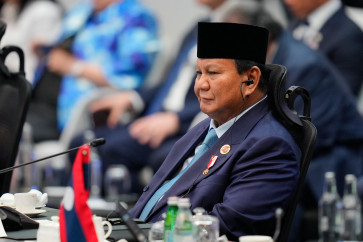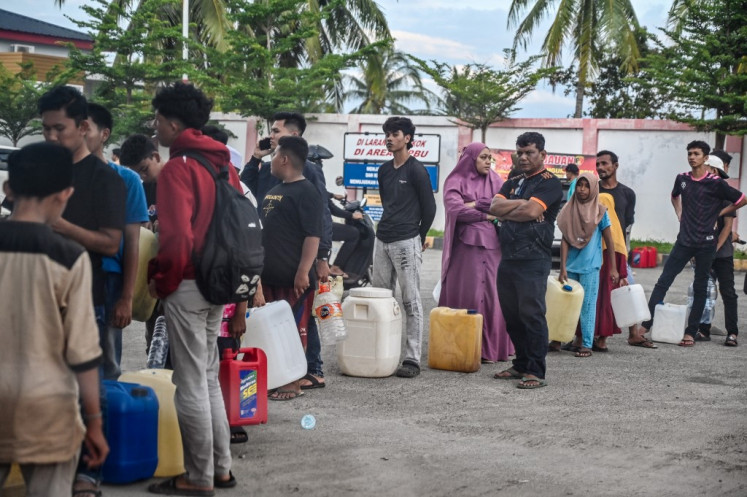Popular Reads
Top Results
Can't find what you're looking for?
View all search resultsPopular Reads
Top Results
Can't find what you're looking for?
View all search resultsSumatran tigers on the brink of survival
Between 1998 to 2002, the Sumatran tigers were poached at a rate of 50 individuals annually
Change text size
Gift Premium Articles
to Anyone
B
etween 1998 to 2002, the Sumatran tigers were poached at a rate of 50 individuals annually. There are only 400 remaining today. Will they meet a similar end to their Javanese and Balinese counterparts?
This year, several conservation institutions like the World Wide Fund for Nature (WWF), have launched campaigns to save tigers, including the Sumatran tiger.
"According to the Chinese calendar, this is the Year of the Tiger," WWF-Indonesia's Desmarita Murni said on Friday. "Coincidentally this year is also International Year of Biodiversity and the year when the tiger summit will take place."
Desmarita said with the events, the organization expected 2010 to be a good year to draw public attention to the endangered species.
Of the nine original tiger sub-species in the world, only six remain. The Balinese, Javanese and Caspian tigers are extinct. The remaining ones are from Sumatra, Siberia, Bengal, Malaya, South China and Indochina.
"Of these, the most endangered is the Sumatran, according to the International Union for Conservation of Nature," Karmila Parakkasi, a survey and monitoring officer at the WWF office in Riau, said.
The major threats faced by Sumatran tigers are habitat degradation, poaching and loss of prey.
Conflict with humans sometimes lead to a tiger's death. Due to habitat loss and expanding human settlement, tigers often encroach into people's backyards. The people sometimes kill the tiger, she said.
"In Riau, most habitat is lost by deforestation due to plantations and industrial forest estates," she said.
The plantations are mostly oil palm while the estates are mostly acacia for paper mills.
"We want to raise public awareness about the plight the tigers face," Desmarita said. In Jakarta and urban areas, she added, the campaign would include using less paper and fund raising.
Using less paper could help reduce forest degradation, she said.
In Jakarta, WWF held a two-day event at Taman Menteng, presenting a photo exhibition and musical performances.
"The campaign is also aimed at those who would buy tiger parts, either for medicine or jewelry," she said.
WWF also received donations through Sahabat Harimau (Friends of the Tiger), she went on.
In Indonesia, Tesso Nilo National Park in Riau is considered an important area for Sumatran tiger conservation. WWF is researching tigers in central Sumatra, using camera traps to estimate population size, habitat and distribution to identify areas that require protection.










